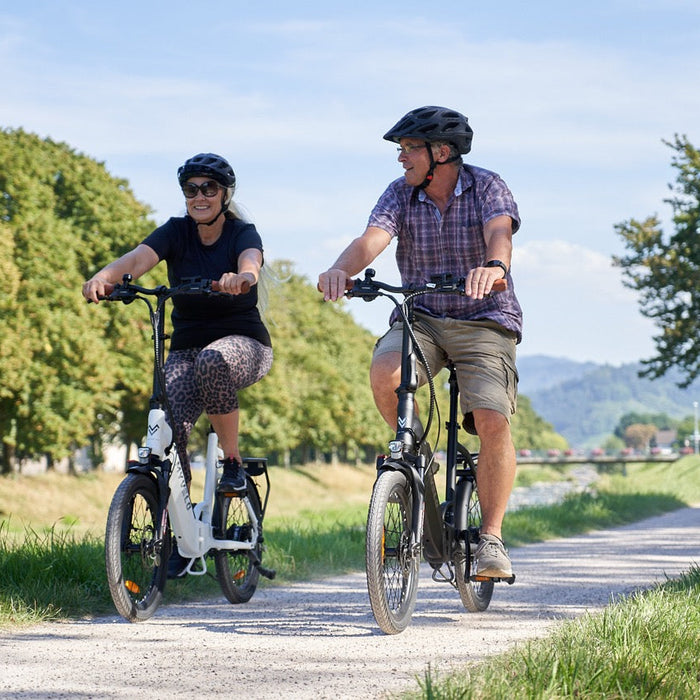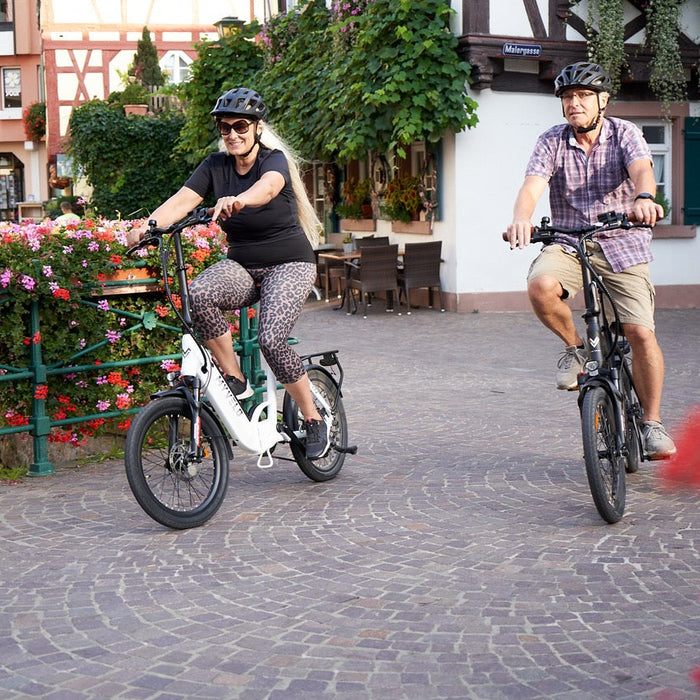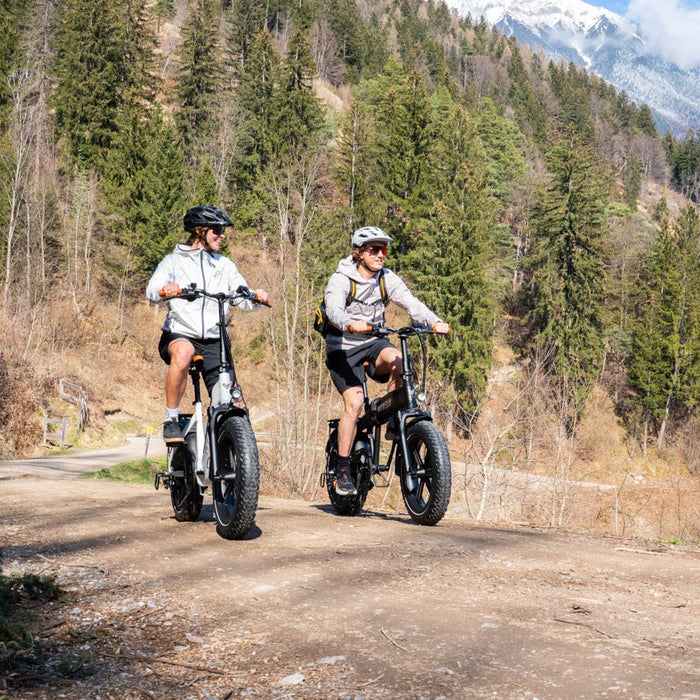
MYVELO ASPEN E-Fully MTB
incl. FREE shipping & free returns

The term "off-camber" refers to a type of terrain or curve where the slope of the ground slopes sideways rather than supporting the rider. Off-camber spots typically have a sideways slope that challenges balance and traction. Such spots often occur on natural trails, rocky or muddy terrain, and on challenging mountain bike routes. When e-biking or mountain biking, off-camber primarily requires skill, balance, and a targeted riding technique.
On off-camber sections, the bike runs the risk of slipping sideways. The slope of the ground means that gravity pulls the bike sideways, making it difficult to control. It is particularly challenging when the ground is slippery - such as after rain, when there is mud or loose rock. E-bike riders often feel this effect particularly strongly, as the additional weight of the e-bike can increase the sideways pull.
Body position and balance: The key is to have the right posture. Lean your upper body slightly towards the slope and keep the bike itself parallel to the track to improve balance and get more grip.
Adjust saddle position: For demanding off-camber passages, it can be helpful to lower the saddle. This lowers your center of gravity and gives you more room to shift your weight downwards and sideways.
Control your effort: Avoid sudden braking, especially on slippery or loose surfaces. Instead, try to apply even pressure to the pedals and keep your speed under control to avoid slipping sideways.
Eyesight and line selection: Always direct your gaze where you want to go. Look far ahead and plan a line that runs as close to the slope as possible to make the route shorter and safer.
Tire pressure and tread: Tire pressure can have a big impact on traction. A little less pressure in the tires increases the contact area and offers more grip. A good tire tread with side lugs gives you additional grip and stability.
The higher weight of the e-bike makes the right technique and balance even more important. Especially on difficult terrain, the extra weight can cause the bike to drift sideways more quickly. It is therefore advisable to ride off-camber sections at a low support level and in a controlled manner. In extreme situations, it can help to switch to a higher level to have more thrust - but only if you maintain control.
Off-camber sections offer an exciting challenge for e-bike and mountain bike riders and are a great way to improve your riding technique. With the right posture, balance and the right tires, you are well prepared to safely master even steep side slopes.

Stress ist längst zur Volkskrankheit geworden – Dauerbelastung im Job, private Verpflichtungen und ständige Erreichbarkeit führen bei vielen Menschen zu einem Gefühl der Überforderung. Doch es gibt einen einfachen Weg, den Kopf freizubekommen: Radfahren. Ob gemütlich durch den Park oder sportlich auf dem Rennrad – das Fahrrad wirkt wie ein natürliches Ventil für Stress. Warum das so ist, zeigt dieser Artikel.

Der Kettenverschleiß ist bei E-Bikes ein noch wichtigeres Thema als bei klassischen Fahrrädern. Der leistungsstarke Motor unterstützt die Pedalkraft, wodurch eine höhere Belastung auf die Kette wirkt.

Der Eco Modus ist eine der wichtigsten Unterstützungsstufen eines E-Bikes und bietet eine ideale Balance zwischen Motorunterstützung und Energieeffizienz. Doch was genau bedeutet Eco Modus, wann sollte man ihn nutzen und welche Vorteile bringt er im Alltag? In diesem Artikel erfährst du alles Wichtige über diese smarte Fahrstufe.